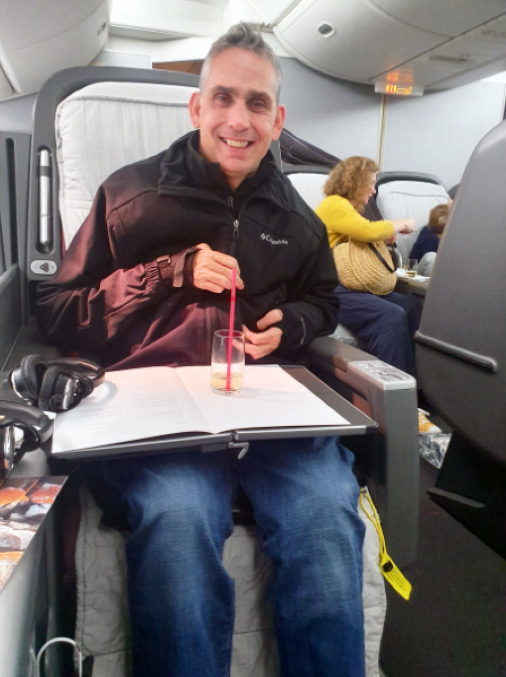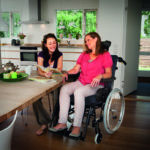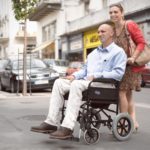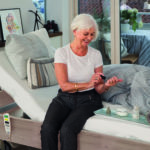Tips and tricks for travelling as a person with a disability
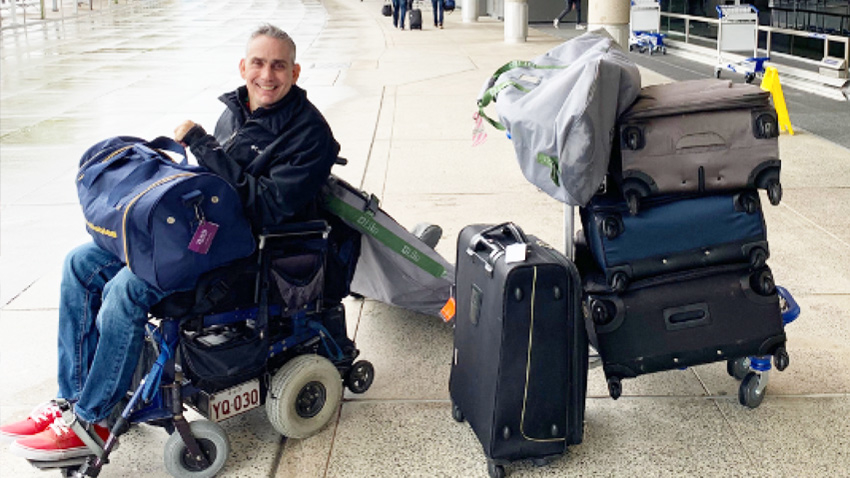
Travelling… We all want to go back to travelling however air travel can be a bit more complicated with a spinal cord injury (SCI), but it’s doable as long as you prepare and keep an open mind. I’ve been fortunate enough to travel on more than 50 flights since my accident – and I plan on flying many more times!
Here are some tips and tricks to make flying with an SCI as comfortable as possible.
Air travel
I love travelling and have been fortunate enough to travel on over 50 flights since my accident – and counting! Along the way I have learnt some handy tips and tricks both first-hand and from fellow travellers which I am going to share in this post. Although air travel is a bit more complicated in a chair, domestic and international travel is easily managed with some prior preparation and an open mind.
Knowledge is power
Due to my disability, I board the aircraft first to allow privacy and room for the crew to transfer me to my allocated seat which is always an aisle seat.
It’s easy to feel overwhelmed: I am prepared to take on all the variables involved that are associated with travelling with a spinal cord injury. Knowing the ins and outs, of each step and having everything ready ahead of time, is essential.
I have my checklist to help navigate the boarding process. Everyone’s checklists will be different, but mine includes:
- Paperwork: medications, taxi vouchers
- Equipment: powerchair, gel batteries, hoist batteries permission slips
- Information: luggage allowance, medical letters
- Personal items: incontinence products, international currency (for tips and incidentals)
Carry your breakables
Sounds weird right? Well, not really, I take my armrests, joystick and anything that will fall off my chair as hand luggage. It’s extra work, but it saves the hassle of arriving at your destination to find your chair is missing an item, broken, and rendered unusable. Yes, I hear you saying this is a lot of work but having to wait for a repair is more time-consuming interstate or in another country.
Skin bladder and bowel care
As a person with a spinal cord injury, I have to be conscious of pressure care which for the people who are unaware can lead to a pressure sore. From my own experiences, pressure sores involve a lengthy recovery ranging from weeks, months and even years of healing. As a precaution, I sit on the cushion that I can use on the aircraft seat to prevent pressure sores. Sitting on a travel cushion increases my overall height and I sit higher than the headrest. My travel buddy adjusts this cushion during the flight as the cushion deflates as the plane gets higher. Another tip I learned was to schedule my bowel and bladder routines around flight times. This involved me ensuring I was hydrating but hadn’t drunk too much! Before any flight, I will have a bathroom break in preparation/readiness to minimise bathroom breaks. On longer flights, bathroom requirements provide a different challenge, but this is very manageable and easily worked around.
Keep it handy
Medical documents, Pens, notepads, passports, medication, straws, incontinences products, phones and clothing are within easy reach. Once your bag is in the overhead it is tough to reach your items if the seatbelt sign is on for long periods. So, have items that you regularly need, within arm’s distance. This means, always have a backpack with all your go-to items with you. On the longer international flights, you have time to retrieve items.
Time management and being on time
Travelling and airport transfers are difficult for most people – and this often doesn’t include a wheelchair! Prior preparation has seen me streamline these, at times, complicated processes for seamless, stress-free travel.
I have done this by always keeping in mind the following: travel to the airport, connecting flights, airport transfers, domestic/international time zone differences and currency exchange. I try to always allow extra time to transfer between domestic and international airports.
Overall, be as prepared as possible and remember that patience is a virtue.
Improvise, adapt, and overcome – this motto has helped me have some of the most incredible travel experiences and I hope it can do the same for you!
Domestic travel
As the seasons have changed and we enter winter and prepare for summer, what a better way to celebrate than getting away for a group holiday!
Fortunately, I have been able to take advantage when these opportunities present themselves. Have you heard the saying when things are meant to be!
When I face a challenge and I find embracing these challenges can be an opportunity.
Group holiday
Recently invited to join a week away Adventure on the Sunshine Coast of Queensland, with four people (2 wheelchair users and 2 support staff). A sizeable accessible van, affectionately known as “Monster”, was hired for our one-week adventure, with a list of activities, day trips and time to chill out.
We settled into the apartment and then took time to enjoy the nice warm sun while watching the waves rolling with a grazing platter and drinks. Our planned and unplanned activities, the list was completed. Highlights included going on the skate park, a day trip to Harvey Bay, Gympie train rides, seeing life
All were very accommodating and with the research before our trip, we were able to establish which facilities had wheelchair access and were able to take the companion card.
New challenges were placed upon everybody and
As the week progressed, we all found a little niche in our roles. I would run to the shops to purchase supplies; someone would pack “Monster”, and another person would call and book tickets. After a fulfilled week, the conclusion was “let’s do this again!”
About the author
Lindsay, who was born and grew up in Brisbane, Australia, obtained a spinal cord injury several years ago which sees him getting around on four wheels instead of two legs. His injury hasn’t stopped him from making the most out of what he refers to as “my beautiful life”. Lindsay’s journey began on the last day of grade 12 at the age of 17 when he went for a celebratory swim at Southbank, Brisbane and broke his neck at vertebrae C5. Over the last 28 years, Lindsay has done public speaking at universities, conferences, fundraisers, and within health care settings. He also works part-time, travel, attend the gym and volunteers as a peer support mentor for the newly injured and their families. Lindsay is an advocate for disability awareness and his goal is to help people and their families who are in similar situations.


